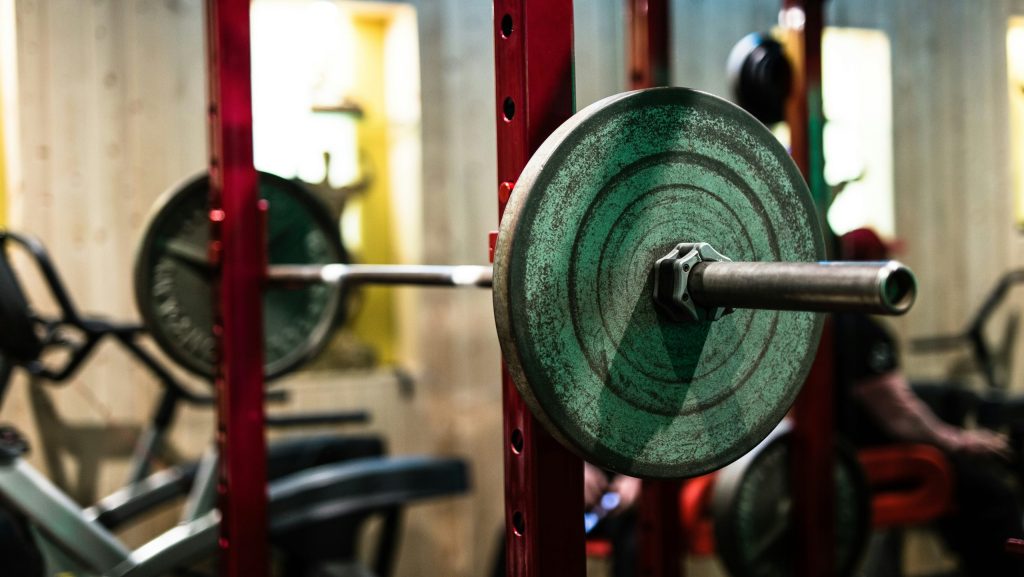Table of Contents
Fitness and strength training have evolved into essential aspects of modern health and wellness. The goal for many is not just improving their appearance but also enhancing physical strength and well-being. A key component in achieving this goal is through gym strength routines, which are structured to target various muscle groups effectively, thus leading to improved muscle growth and fitness.
Building muscle is a common goal among fitness enthusiasts around the world, encompassing a range of objectives from enhancing physical appearance to boosting athletic performance and overall health. Achieving this goal involves a multi-faceted approach, which includes understanding and applying effective strength training principles, engaging in specific gym workouts for muscle growth, adhering to a proper nutrition plan, implementing strategic recovery methods, and customizing routines to individual needs.
“Did you know that incorporating specific strength routines in your gym workouts can significantly enhance muscle growth and physical fitness?”
The focus of this article is on several key aspects of building muscle. It begins with an in-depth look at effective strength training principles, which are essential for structuring workouts that are both efficient and effective in muscle development. The discussion then moves to gym workouts specifically designed for muscle growth, examining a variety of exercises and routines that effectively work different muscle groups.
Nutrition plays a critical role in supporting strength training efforts. The section on nutrition for strength and muscle will provide detailed information on how dietary choices can significantly impact muscle growth and overall fitness. This includes insights into protein intake, balanced dieting, and the role of supplements in a fitness regimen.
Recovery is an often-overlooked aspect of muscle building. The article will cover various recovery strategies essential for muscle growth, detailing how rest and recovery techniques contribute to muscle development and prevent injuries. Finally, the article addresses the importance of customizing gym routines. It will discuss how to adapt workouts to individual fitness levels and goals, ensuring that each person’s fitness plan is aligned with their unique requirements and objectives.
- Effective Strength Training Principles: Explore foundational strategies for muscle development.
- Gym Workouts for Muscle Growth: Discover specific exercises and routines for targeted muscle growth.
- Nutrition for Strength and Muscle: Understand the impact of diet on muscle building and overall fitness.
- Recovery Strategies in Muscle Building: Learn about the importance of rest and recovery in muscle development.
- Customizing Your Gym Routine: Find out how to tailor workouts to personal goals and progress.
Effective Strength Training Principles
Understanding the principles of effective strength training is crucial for achieving optimal muscle growth and fitness. These principles guide the creation of gym routines that are not only efficient but also result in significant muscle development.
Training Frequency
The frequency of workouts is essential in the development of muscle and overall fitness progress. It involves a careful balance between exercising to stimulate muscle growth and allowing time for muscle recovery and repair. For beginners, a routine of 2-3 gym sessions per week is recommended. For more advanced individuals, increasing the frequency to 4-5 times a week with more specialized routines is beneficial. It’s vital to adjust training frequency based on individual responses to workouts.
“Regular training frequency adjustment can lead to a 50% increase in muscle growth and performance over time.”
Exercise Selection
Selecting the right exercises is essential in effective strength training. A balanced workout should include both compound and isolation exercises. Compound exercises, such as squats and deadlifts, work multiple muscle groups and are effective for building overall strength and muscle mass. Isolation exercises target specific muscles and are useful for addressing muscle imbalances.
| Exercise Type | Targets | Examples |
|---|---|---|
| Compound | Multiple Muscles | Squats, Deadlifts |
| Isolation | Specific Muscles | Bicep Curls, Leg Extensions |
Intensity and Progression
The intensity of workouts and their progression is crucial. Starting with lighter weights and focusing on proper form is important for beginners to prevent injuries. As muscle adaptation occurs, gradually increasing the weight and intensity is necessary for continuous growth. Progressive overload challenges muscles to continually adapt and grow. Keeping a training log is beneficial in tracking progress and ensuring consistent increases in workout demands.

Gym Workouts for Muscle Growth
Gym workouts tailored for muscle growth are essential components of an effective fitness plan. This section will discuss how to structure gym routines to maximize muscle development, focusing on compound movements, routine variation, and the appropriate volume and repetition needed for optimal muscle growth.
Compound Movements
Compound movements are a critical element of any muscle-building routine. Exercises such as squats, deadlifts, bench presses, and pull-ups engage multiple muscle groups simultaneously, allowing for a more efficient and comprehensive workout. These movements are highly effective for building overall muscle mass and strength, providing a solid foundation for any strength training program.
“Compound exercises like squats and deadlifts can engage more than 200 muscles in a single movement.”
Routine Variation
Variation in a workout routine is key to continuous muscle development and avoiding plateaus. Changing up exercises, workout structure, and training variables keeps the muscles challenged and growing. This variation can include altering exercises, adjusting the number of sets and reps, or modifying rest intervals.
- Altering the exercises.
- Changing the order of exercises.
- Adjusting the number of sets and repetitions.
- Modifying the rest intervals between sets.
- Cycling different routines every few weeks or months.
Volume and Repetition
Workout volume, defined by the number of sets and repetitions performed, plays a significant role in muscle hypert
Nutrition for Strength and Muscle
Nutrition is crucial in building strength and muscle, providing the essential building blocks for muscle repair, growth, and overall health. This section focuses on the key dietary components necessary for muscle development.
Protein Requirements
Protein is essential for muscle repair and growth, supplying the amino acids needed for building muscle tissue. The recommended protein intake for muscle building is typically 1.2 to 2.0 grams per kilogram of body weight per day. Suitable protein sources include lean meats, fish, dairy products, eggs, legumes, nuts, tofu, and tempeh.
“Adequate protein intake can increase muscle synthesis by up to 25% post-workout.”
Balanced Dieting
A balanced diet is essential for muscle growth, comprising proteins, fats, and carbohydrates. A varied diet ensures an adequate intake of all necessary nutrients.
| Nutrient Type | Examples |
|---|---|
| Proteins | Lean meats, Fish, Legumes |
| Carbohydrates | Whole grains, Fruits, Vegetables |
| Fats | Avocados, Nuts, Olive oil |
| Vitamins/Minerals | Fruits, Vegetables |
Supplementation
Supplements can support muscle growth and overall nutrition. Common supplements include whey protein, creatine, BCAAs, and omega-3 fatty acids. However, supplementation should complement a balanced diet, and it’s advisable to consult a healthcare professional before starting any supplement regimen.

Recovery Strategies in Muscle Building
Recovery is a vital aspect of muscle building, essential for muscle growth, injury prevention, and the effectiveness of strength training. This section covers essential recovery strategies, including rest days, sleep quality, and active recovery techniques.
Rest Days
Rest days are crucial for muscle repair and growth, allowing muscles to recover and grow, and reducing the risk of overtraining. It’s recommended to schedule 1-2 rest days per week, depending on the workout intensity and individual recovery rates. Light activities like walking or gentle stretching on rest days can be beneficial.
Sleep Quality
Sleep is critical for muscle recovery, with growth hormones released during sleep essential for muscle repair. Adults should aim for 7-9 hours of quality sleep each night. Improving sleep quality can involve establishing a regular sleep schedule and creating a comfortable sleeping environment.
“During sleep, the body releases growth hormones, which are essential for muscle repair and can increase muscle strength by up to 20%.”
Active Recovery
Active recovery involves low-intensity exercise to maintain blood flow to muscles, aiding in recovery. Recommended active recovery techniques include:
- Walking or light jogging
- Cycling at a relaxed pace
- Swimming with moderate effort
- Light resistance training
- Gentle yoga or stretching sessions
Customizing Your Gym Routine
Customizing your gym routine to align with individual fitness goals and needs is essential for an effective exercise program. This section provides guidance on creating a personalized workout plan.
Goal Setting
Setting specific, measurable, and achievable fitness goals is crucial in guiding your workout routine. These goals should be SMART: Specific, Measurable, Achievable, Relevant, and Time-bound. For example, a goal like “increase bench press weight by 10kg in 12 weeks” is SMART and provides a clear timeline for achievement.
“Setting specific and measurable fitness goals can increase the likelihood of success by up to 40%.”
Adaptability
Adapting your workout routine is necessary to meet changing fitness levels and goals. Changes can include varying exercises, adjusting intensity or volume, or integrating different training styles. This flexibility helps overcome plateaus, prevents boredom, and keeps your routine challenging and effective.
Monitoring Progress
Regularly tracking your fitness progress is integral to evaluating the effectiveness of your workout routine. Methods for monitoring include:
- Using fitness apps to log workouts and track improvements
- Keeping a workout journal for daily exercises and reflections
Conclusion
This comprehensive guide has meticulously explored the essential components of muscle building and overall fitness enhancement. From effective strength training principles to personalized workout routines, each element plays a crucial role in achieving optimal results.
Integrate these proven strategies into your routine, customize your approach to meet your unique goals, and continuously evolve. Your path to strength and muscle building success starts today.
Key Insights Recap
Throughout this guide, we have covered:
- Effective strength training as the foundation of muscle building.
- Tailored gym workouts to catalyze muscle growth and enhance fitness.
- Nutrition as a pivotal component in supporting and maximizing workout results.
- Recovery as a crucial element for muscle repair, growth, and injury prevention.
- Customizing your routine to ensure alignment with personal fitness goals.
In summary, achieving and maintaining muscle growth and fitness requires a comprehensive approach. Consistency, dedication, and a willingness to adapt and learn are your greatest allies in achieving and sustaining your health and fitness goals.